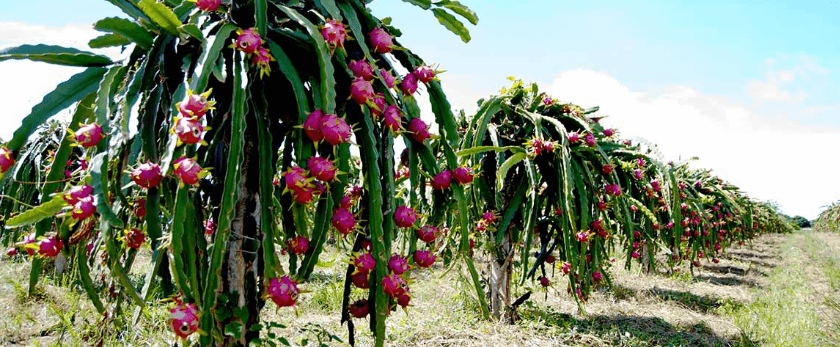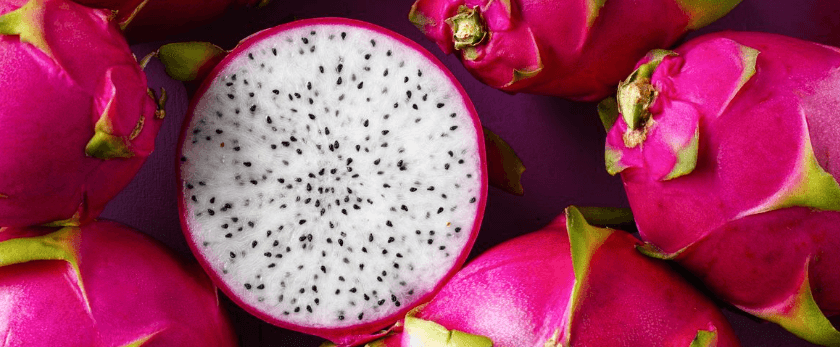Dragon fruit, also known as pitaya, is a unique and exotic fruit that is becoming increasingly popular due to its health benefits and delicious taste. Not only is it a tasty addition to any meal, but it is also relatively easy to grow, making it a great option for those looking to add some greenery to their home or garden. In this article, we will discuss the steps to successfully grow dragon fruit, including caring for the plant, the best time to grow, and common problems that may arise.
Caring for Dragon Fruit
Watering
Dragon fruit plants require regular watering, especially during the growing season. The soil should be kept moist but not waterlogged. It is important to water the plant deeply, allowing the water to reach the roots. However, be careful not to overwater as this can lead to root rot. During the winter months, reduce watering to once a week.
Light
Dragon fruit plants thrive in full sun, so it is important to place them in a location that receives at least 6 hours of sunlight per day. If you are growing the plant indoors, make sure to place it near a window that receives plenty of sunlight. If you live in a colder climate, you can also use a grow light to provide the necessary light for the plant.
Soil
Dragon fruit plants prefer well-draining soil that is rich in organic matter. A mix of potting soil and compost is ideal for growing dragon fruit. Make sure to avoid using soil that is too heavy or compact, as this can lead to poor drainage and root rot.
Fertilizer
Fertilizing your dragon fruit plant is essential for its growth and fruit production. Use a balanced fertilizer, such as a 10-10-10, once a month during the growing season. You can also use a slow-release fertilizer at the beginning of the growing season to provide nutrients to the plant over time.
Pruning
Pruning is an important aspect of caring for dragon fruit plants. It helps to promote growth and fruit production, as well as maintain the plant's shape. Prune off any dead or damaged branches, as well as any branches that are growing in the wrong direction. You can also prune the plant to keep it at a manageable size.

Best Time to Grow Dragon Fruit
The best time to grow dragon fruit depends on your location and climate. In general, dragon fruit plants thrive in warm and humid climates. If you live in a colder climate, you can still grow dragon fruit, but it is best to do so in a greenhouse or indoors.
In warmer climates, dragon fruit can be grown year-round. However, the best time to plant is during the spring or early summer when the temperatures are consistently warm. This will give the plant enough time to establish itself before the colder months.
Common Problems with Dragon Fruit
While dragon fruit plants are relatively easy to grow, there are some common problems that may arise. Here are a few issues to look out for and how to address them:
Pests
Dragon fruit plants are susceptible to pests such as mealybugs, scale insects, and spider mites. Regularly inspect your plant for any signs of pests, such as white cotton-like substances or tiny webs. If you notice any pests, you can use an insecticidal soap or neem oil to get rid of them.
Diseases
Root rot is a common disease that can affect dragon fruit plants. This is caused by overwatering or poor drainage. To prevent root rot, make sure to water your plant properly and use well-draining soil. If your plant does develop root rot, you can try to save it by cutting off the affected roots and repotting it in fresh soil.
Lack of Fruit Production
If your dragon fruit plant is not producing fruit, it could be due to a lack of pollination. Dragon fruit plants are self-pollinating, but they may need some help to produce fruit. You can hand-pollinate the flowers by using a small paintbrush to transfer pollen from one flower to another.
Conclusion
Growing dragon fruit is a rewarding experience that can add a touch of exotic beauty to your home or garden. By following these care tips and being aware of common problems, you can successfully grow your own dragon fruit and enjoy its delicious and nutritious fruit. Remember to also practice responsible disposal methods for a sustainable future, such as composting any plant waste and using eco-friendly fertilizers. Happy growing!










